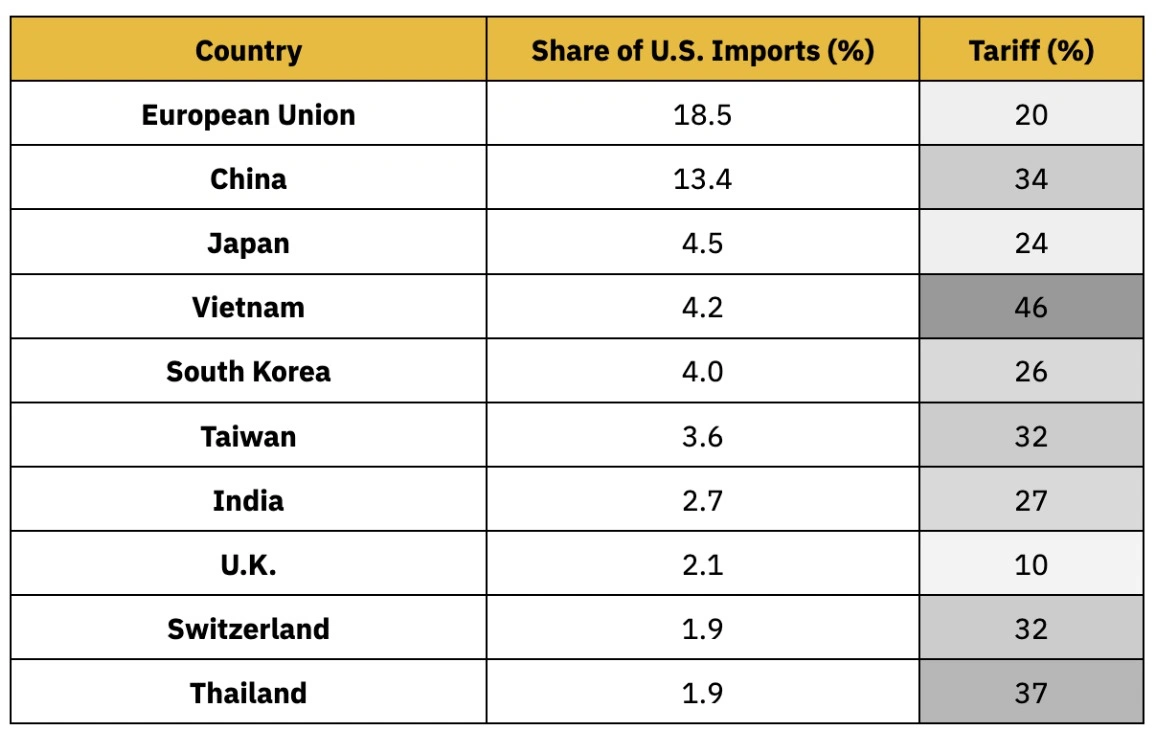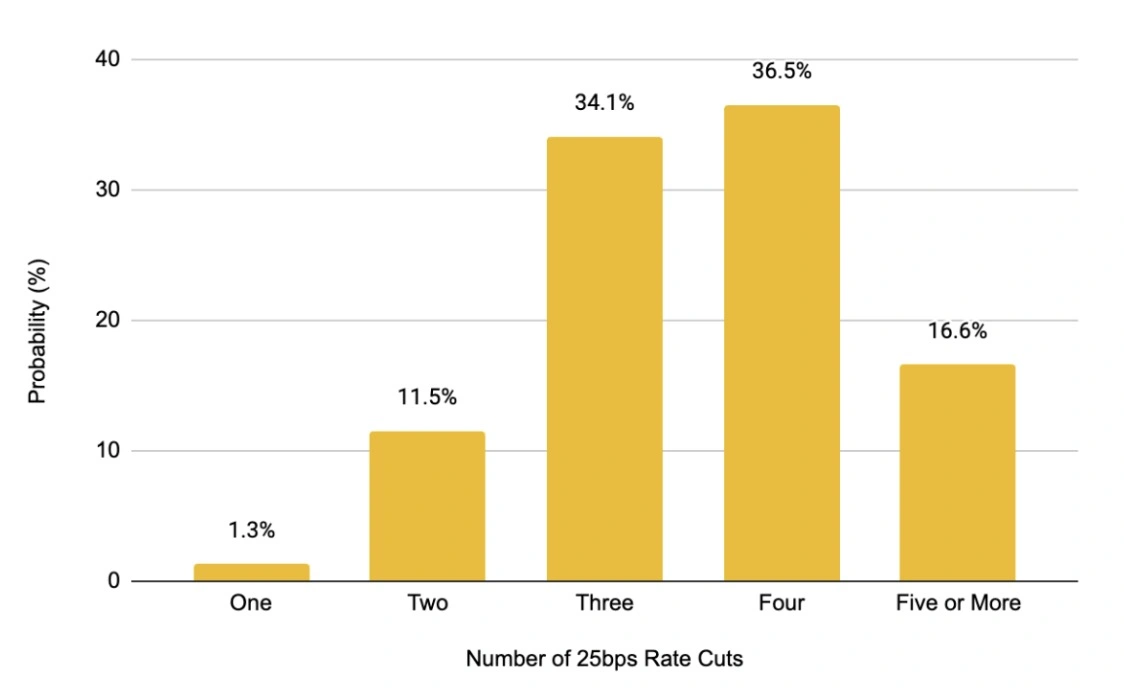According to a Binance report, market sentiment has now become cautious, with investors reacting to the tariff announcements in classic ‘risk-off’ behavior as they expect more volatility.
As a result, total crypto market capitalization has dropped an estimated 25.9% from January highs — canceling out about $1T in value — highlighting its sensitivity to macroeconomic instability.
Crypto assets have mostly moved in lockstep with equities, with both experiencing a reduction in demand, broad selloffs, and a slide into correction territory. This seems to have pushed investors seeking safety from the volatility towards traditional safe havens like bonds and gold, causing them to rally, with gold breaking successive all-time highs.
How the new development is affecting import taxes in the U.S.

The recent developments with the tariffs have reportedly raised U.S. import taxes to heights that have not been seen since the Smoot-Hawley Tariff Act of 1930, which saw sweeping tariffs imposed on thousands of goods during the Great Depression.
Available data now suggests the average U.S. tariff rate has surged to around 18.8%, with some estimates placing it as high as 22% — a noticeable increase from just 2.5% in 2024.
This is quite extreme when you consider that tariffs averaged 1–2% for much of recent history, and even between 2018–2019 when there were trade skirmishes, tariffs did not exceed 3%.
Crypto volatility depends on the Federal Reserve’s disinflation efforts
The new tariffs result in a substantial tax hike on imported goods, and this will add fresh inflationary pressure that will coincide with the Federal Reserve’s attempts to quell price growth.
There are now concerns that these measures could undermine disinflation efforts. Right now, market-based measures like 1-year inflation swaps are higher than 3%. However, consumer surveys now show investors anticipate a surge to 5%. This highlights the general belief that prices will increase even more in the next year.

Economists have also warned that a full-blown tariff war could see the world economy lose up to $1.4T in output, with U.S. real GDP per capita projected to fall nearly 1% in the early stages.
Some believe that if the full tariff regime becomes the standard, many economies could slide into recession. After all, U.S. tariff levels are now so high, the majority of the previous forecasts are no longer valid.
The growing threat to economic progress has forced the Fed to alter its focus, which was on curbing inflation, and markets are beginning to anticipate a potential pivot in monetary policy to support the economy.
The central bank also faces a difficult decision; it can either tolerate tariff-driven inflation or maintain a hawkish rate position at the risk of exacerbating a potential economic slowdown.
In the short term, the Fed seems committed to keeping long-term inflation expectations well-anchored. Nevertheless, policy decisions are expected to remain data-dependent — determined by whichever signal, inflation or growth, shows greater weakness.
Should inflation rise too far above target, the risk is the emergence of a stagflationary environment, which may limit the Fed’s ability to respond. This uncertain policy outlook is further contributing to market volatility.
In the short term, crypto may remain volatile in the face of the tariff war, with sentiment shifting in response to ongoing developments.
If inflation increases while growth falters, the Fed’s response will be pivotal, and a pivot to easing could trigger a crypto rally through renewed liquidity, while a hawkish stance may maintain pressure on risk assets.
Should macro conditions stabilize, it is likely for new narratives to take hold, or crypto could reassert its role as a long-term hedge, meaning renewed growth could follow.
Cryptopolitan Academy: Want to grow your money in 2025? Learn how to do it with DeFi in our upcoming webclass. Save Your Spot
















No comments yet